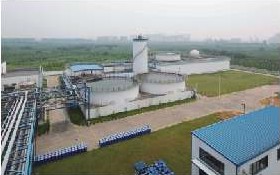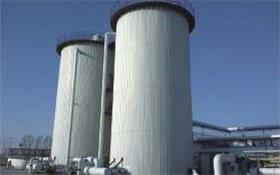Process Principle
Fenton oxidation method is to generate hydroxyl radical (· oh) with strong oxidation ability in the presence of Fe2 + under acidic conditions, and trigger more other reactive oxygen species to realize the degradation of organic compounds. Its oxidation process is a chain reaction. The generation of · Oh is the beginning of the chain, while other reactive oxygen species and reaction intermediates constitute the nodes of the chain. Each reactive oxygen species are consumed and the reaction chain is terminated. The reaction mechanism is complex. These reactive oxygen species are only used for organic molecules and mineralize them into inorganic substances such as CO2 and H2O. Thus, Fenton oxidation has become one of the important advanced oxidation technologies.


Characteristics
Fenton reactor, also known as Fenton fluidized bed reactor and Fenton reaction tower, is a necessary equipment for advanced oxidation of wastewater by Fenton reaction. Based on the traditional Fenton reaction tower, our company has developed a patented Fenton fluidized bed reactor. This equipment uses the fluidized bed method to make most of the Fe3 + produced by Fenton Method attached to the surface of the fluidized bed Fenton carrier by crystallization or precipitation, which can greatly reduce the dosage of traditional Fenton Method and the amount of chemical sludge produced (the addition of H2O2 is reduced by 10% ~ 20%), The amount of Fe2 + is reduced by 50% ~ 70%, and the amount of sludge is reduced by 40% ~ 50%). At the same time, the iron oxide formed on the surface of the carrier has heterogeneous catalytic effect. The fluidized bed technology also promotes the chemical oxidation reaction rate and mass transfer effect, effectively improves the COD removal rate by 10% ~ 20%, and saves 30% ~ 50% of the treatment and operation cost.
Application
Fenton reactor is widely used in the removal of refractory organic pollutants, such as printing and dyeing wastewater, oily wastewater, phenol wastewater, coking wastewater, nitrobenzene wastewater, diphenylamine wastewater and so on. As an advanced wastewater treatment technology, Fenton process uses the chain reaction between Fe2 + and H2O2 to catalyze the generation of hydroxyl radical (· oh) with strong oxidation, which can oxidize various toxic and refractory organic compounds. For the treatment of high concentration refractory wastewater, it can be used as biological pretreatment to improve water quality and enhance the biodegradability of wastewater, Create favorable conditions for subsequent advanced treatment. It is especially suitable for the advanced treatment of organic wastewater that is difficult to biodegrade or general chemical oxidation, such as landfill leachate.
-
SJYZ Three Tank Integrated Automatic Dosing Device
-
Wsz-Mbr Underground Integrated Sewage Treatment...
-
Industrial Activated Carbon Water Filter/Quartz...
-
Water Purification System PVDF Ultra-Filtration...
-
Sewage treatment pipeline mixing device
-
Wsz-Ao Underground Integrated Sewage Treatment ...







